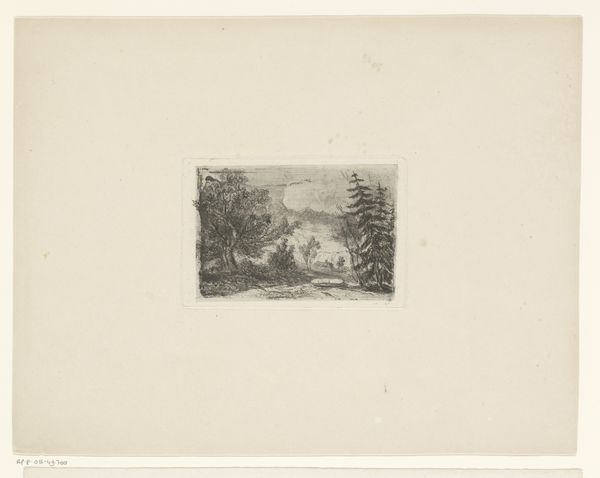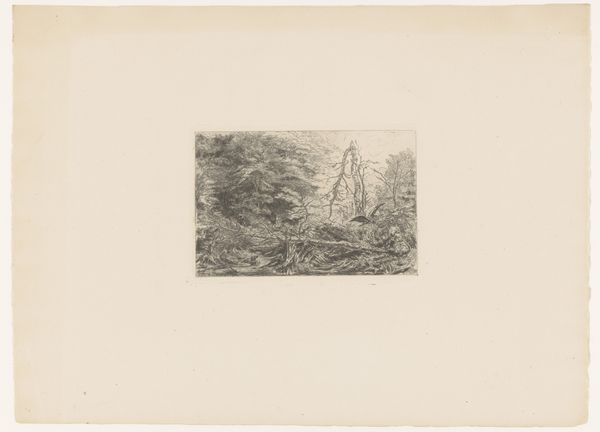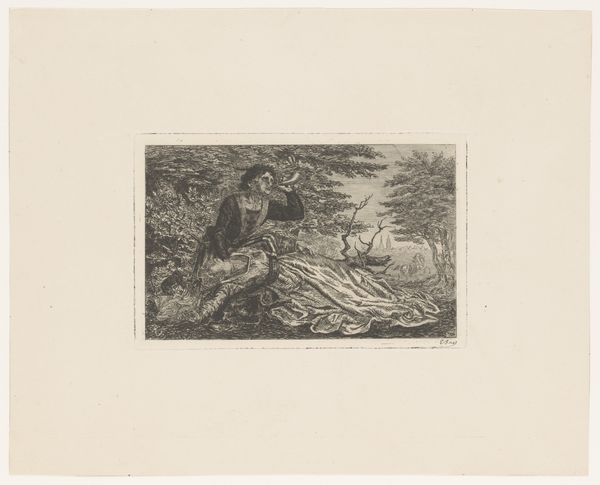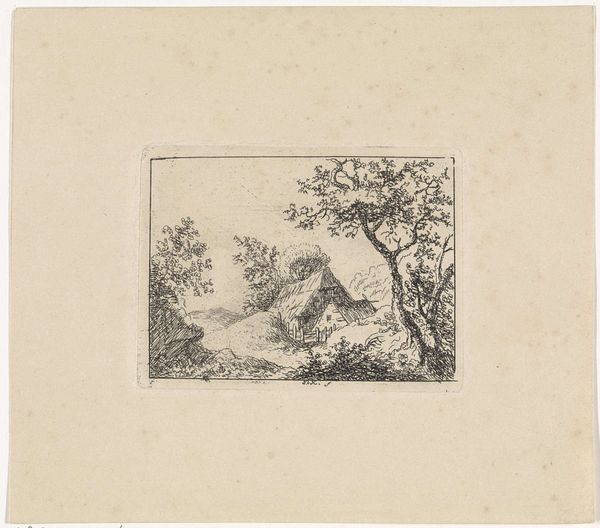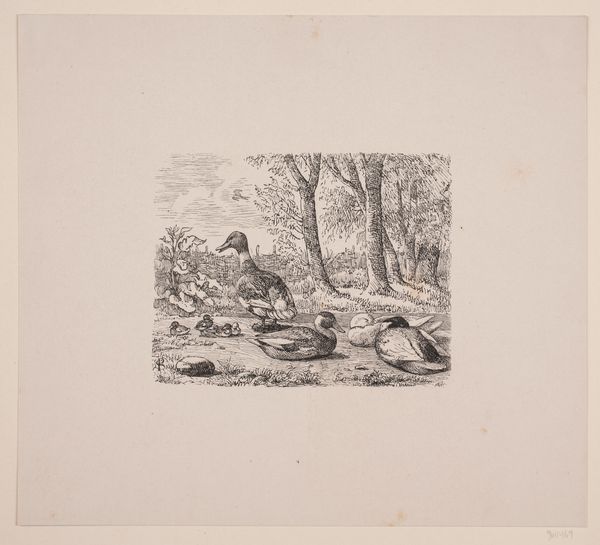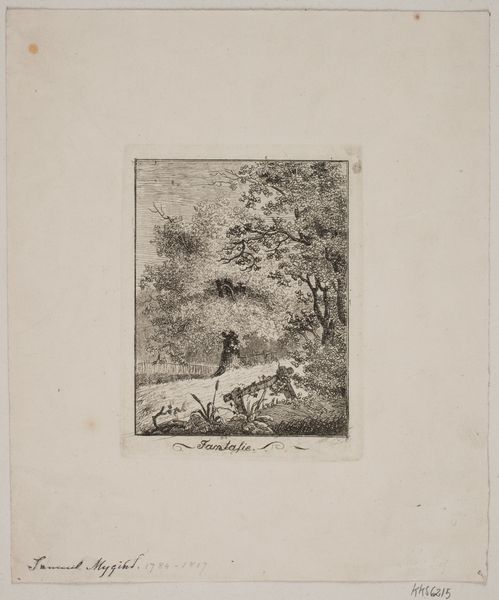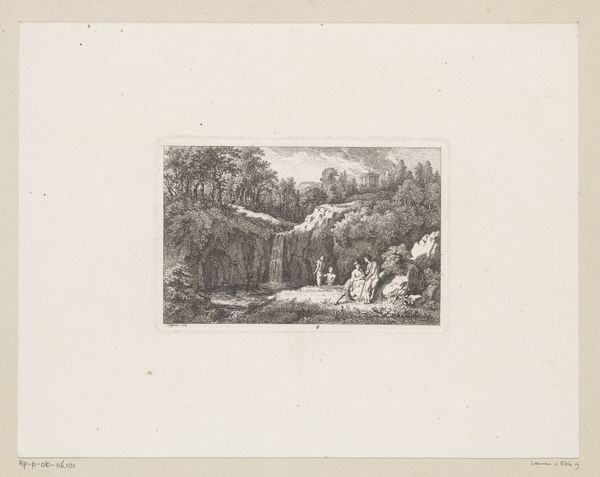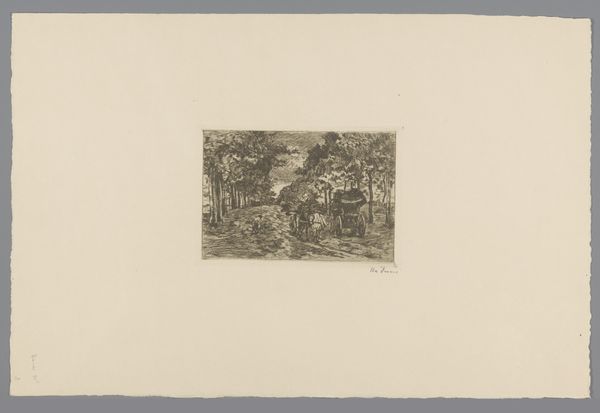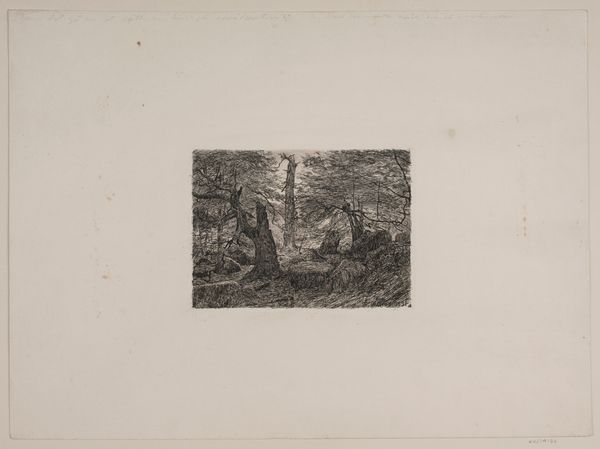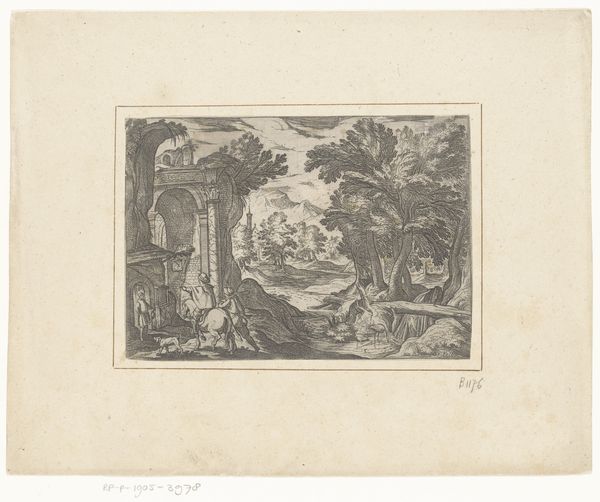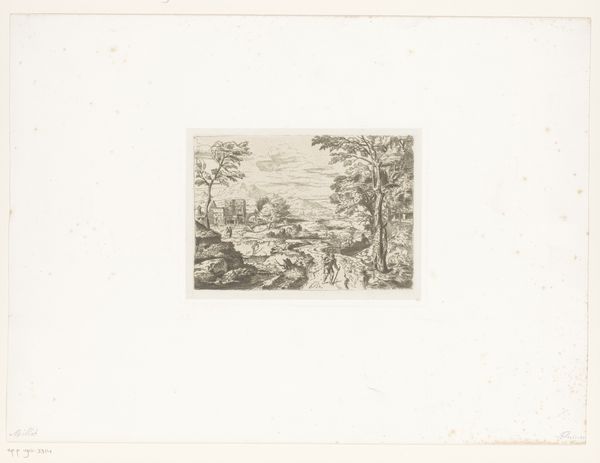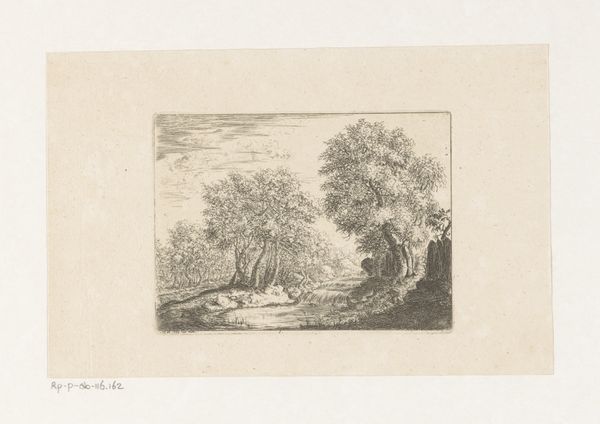
Dimensions: height 106 mm, width 166 mm
Copyright: Rijks Museum: Open Domain
Curator: This etching by Salomon Gessner, dating from 1767 to 1768, is entitled "Four Bathing Women in an Arcadian Landscape." It's currently held in the Rijksmuseum collection. Editor: It strikes me as intensely bucolic; a romanticised view of simplicity. There's a very controlled use of light and shadow; a lot of detail crammed into quite a small space. It feels deliberately old-fashioned, even for its time. Curator: Gessner was consciously creating an image rooted in pastoral traditions, looking back to classical ideals of harmony and leisure. Consider the materials; etching, while technically sophisticated, lends itself to reproduction, making this arcadian dream accessible. Editor: Absolutely, the proliferation of prints like these speaks to the burgeoning middle class and their aspirational lifestyle. They become consumers of imagery; desiring to connect with nature in a mediated, artistic fashion. I wonder where these prints would be displayed, what class of person would acquire such prints, and for what purposes. Curator: The materiality definitely dictated the reception. Each print would be an investment. It's about ownership. Look at the labour, for example, consider Gessner etching the image—reproducing the plate to be re-reproduced so others may consume this artwork, where are the economies and politics of production within this image? Editor: It also connects to a much wider dialogue about public morality. This artwork becomes a representation of how art impacts behavior. What kind of society consumed such idealized natural environments and portrayals of nudity? Curator: And how it consumes! There is a whole machine working to manufacture desire; not only do they desire beauty, but beauty must be material and readily possessed. Editor: Precisely, the ownership becomes both artistic and moral; they have acquired art that both aesthetically appeals, and art that speaks to social ideals, however constructed. Curator: Indeed. Ultimately, this image offers us an interesting intersection of the means of art-making, and a visual portal to its consumption and impact upon social discourse. Editor: For me, I will carry on considering this imagery’s implication in our own contemporary public narratives around virtue, access, and, maybe ironically, visibility of the human body.
Comments
No comments
Be the first to comment and join the conversation on the ultimate creative platform.
